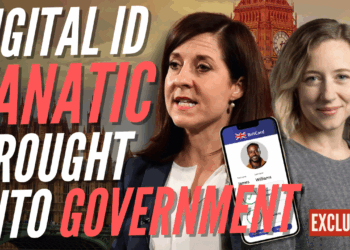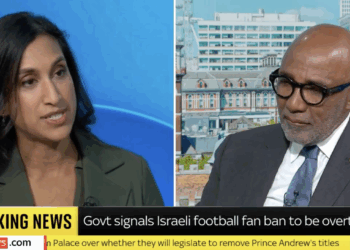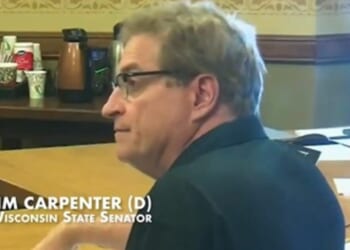New York City Mayor-elect Zohran Mamdani was not the first politician to make housing affordability a primary electoral issue, but the depths of the current crisis guarantees that he won’t be the last.
“Decouple school assignment and zip code” and the economic pressure on housing “would be released almost immediately.”
The Connecticut legislature has already called a special session for the middle of November to consider a statute which would require all of the state’s 169 towns to make a fixed percentage of their housing stock more affordable — the so-called “Fair Share” bill. And although the Arizona legislature has adjourned for the year, the Starter Home Act (HB 2371), which would reduce the cost of residential construction by loosening local aesthetic mandates, has passed two House committees and the state Senate.
According to Nada Hussein, State and Local Research Analyst for the National Low Income Housing Coalition, more than 150 bills related to home affordability were introduced in various state assemblies over the last ten months, many pushing for progressive solutions like relaxed zoning rules, rent control, and stronger tenant eviction protections.
Sadly ignored in all these emerging proposals is any reference to a surprisingly relevant provision in President Trump’s recently passed reconciliation act, alias the One Big Beautiful Bill (OBBB). Specifically, section 70411, which beginning in 2027 will allow all U.S. taxpayers to claim a dollar-for-dollar federal tax credit for donations to any qualified non-profit whose mission is providing private and parochial school scholarships. Although primarily designed to benefit the children of households earning less than 300 percent of their area’s gross median income, final IRS regulations could make 90 percent of all students eligible to receive such funding.
What this means is that any state, at no expense to itself, could soon have a large network of privately funded independent schools, strategically located to serve distressed cities and other municipalities where student scores on math, reading, and other mastery tests have long disappointed. All that is needed is for the state’s governor to declare local K-12 scholarship programs eligible to receive federally tax-credited donations.
Section 70411 of the OBBB was clearly enacted as an education reform, a way to make alternative placements available to children of low- and middle- income families dissatisfied with their public schools. But as one-time Harvard Law School professor and bankruptcy expert — now U.S. Senator — Elizabeth Warren first argued more than two decades ago, providing American families with what has come to be called “school choice” is also the most effective way to supply the country with more affordable housing.
The reason, as Warren explained in her book The Two Income Trap, is that the primary driver of both high home prices and excessive apartment rents is too many families trying to locate in the relatively few communities with reputations for good public schools. As a result, housing costs in educationally desirable zip codes are pushed up far beyond what they would otherwise be, while other towns suffer from a lack of demand for new homes and rentals which can be built at reasonable prices.
In other words, the key to reducing the high cost of housing is to eliminate the “good school premium” currently attached to just a small number of towns by making private alternatives more widely available. Or as Warren herself put it in a 2003 interview with the policy quarterly CommonWealth, “Decouple school assignment and zip code” and the economic pressure on housing “would be released almost immediately.”
Since deciding to leave academia and run for a Massachusetts Senate seat in 2012, Warren has unfortunately gone silent about her antidote for high housing costs, but examples of her prescription abound. Take the case of the University of Pennsylvania, which for years had struggled to revive a decaying neighborhood near its main campus. Nothing worked until someone in the administration hit on the idea of running an alternative elementary school for area children. Almost overnight the blighted area blossomed as parents from surrounding suburbs realized they did not have to support onerous mortgages just to give their kids a quality education.
And then there is the work of Bartley Danielsen, a professor of real estate at North Carolina State University. For more than a decade Danielsen has been researching the effect of school choice on housing patterns in economically struggling areas. No matter where he looked — small towns in Vermont or congested districts in Paris, France — the result was always the same: upwardly mobile families in these communities no longer felt the need for pricier residences in “better” places while growing numbers of outsiders wanted to move in.
Some who have studied the effect of school choice on home affordability did initially worry that turning disadvantaged towns into real estate bargains might gentrify the poorest residents out of their old neighborhoods. But as a recent Philadelphia Federal Reserve Bank report makes clear, this only happens when local politicians needlessly limit new construction. People moving into an economically rebounding community have little interest in occupying or rehabbing pre-existing rental units.
If the spread of school choice has the potential to negatively effect any group, it is the residents of wealthier areas who can no longer sell their homes at an exaggerated premium just for having a good public school. But even they stand to benefit if affordable housing policies that needlessly raise taxes to build rent-controlled apartments or lead to overdevelopment can be avoided.
President Trump’s initial response to the Mayor-elect’s surprise win in New York City’s Democrat primary was to say that he himself would declare a national housing emergency this fall. But before he or anyone else in the GOP floats a housing bill of their own, they should learn more about how a policy they already support — school choice — can help.
The point Republicans should stress is that the failure of any state’s governor to sign onto section 70411 of the OBBB would not prevent state residents from taking the tax credit (they could make donations to qualified nonprofits in other states). It would just mean that the credit’s educational and housing benefits will go to other states.
READ MORE from Lewis M. Andrews:
Blue States Losing Out on Foreign Investment


![Scott Bessent Explains The Big Picture Everyone is Missing During the Shutdown [WATCH]](https://www.right2024.com/wp-content/uploads/2025/11/Scott-Bessent-Explains-The-Big-Picture-Everyone-is-Missing-During-350x250.jpg)













